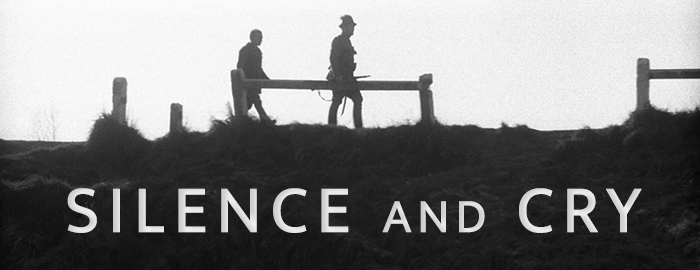
B&W, 1968, 76 mins. 49 secs.
Directed by Miklós Jancsó
Starring András Kozák, Mari Töröcsik, József Madaras, Zoltán Latinovits, Andrea Drahota
Second Run (Blu-ray & DVD) (UK R0 HD/PAL), 21st Century DreamQuest Films (DVD) (Canada R1 NTSC) / WS (2.35:1) (16:9)
Increasingly 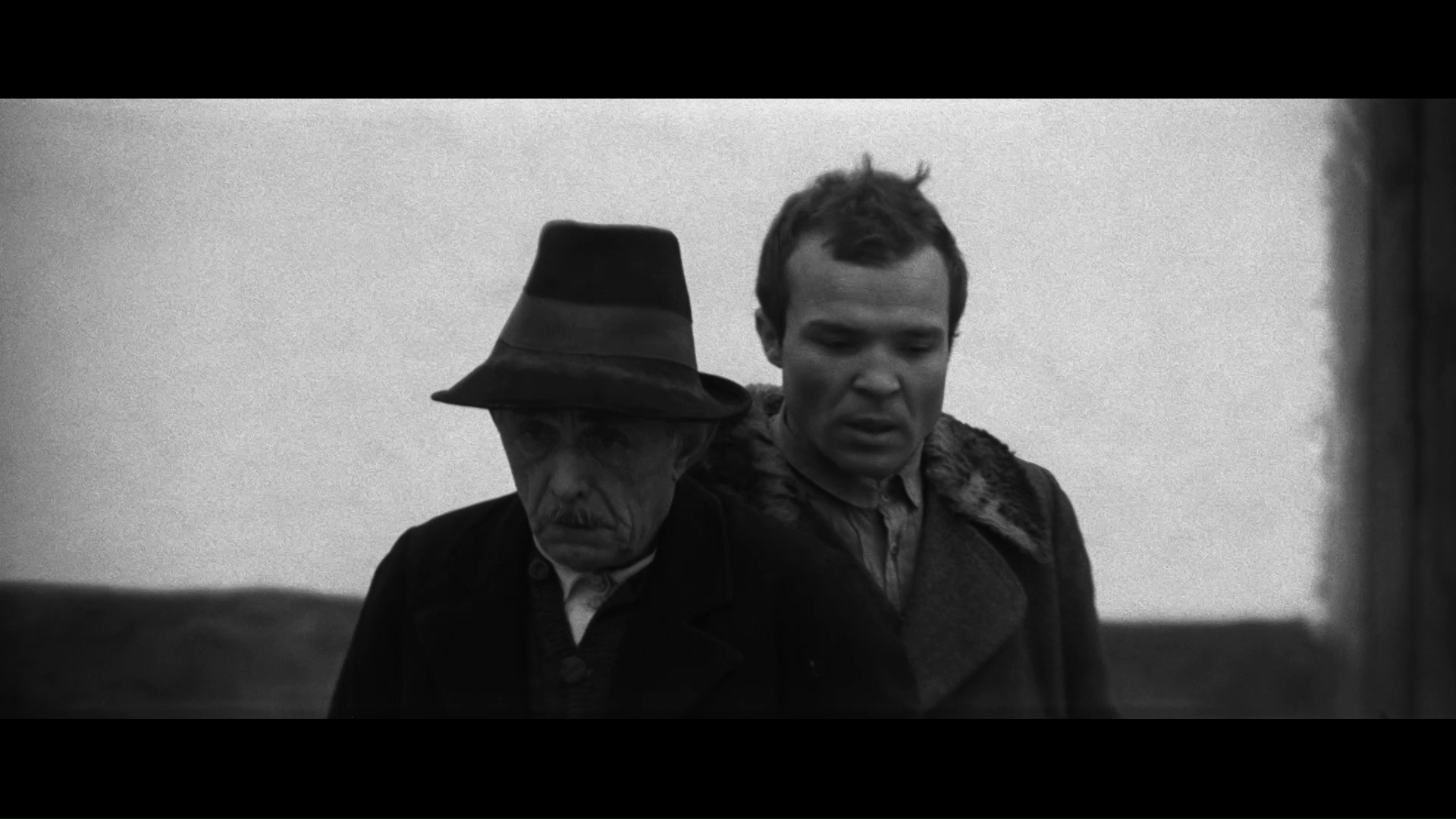 recognized as a profoundly
recognized as a profoundly 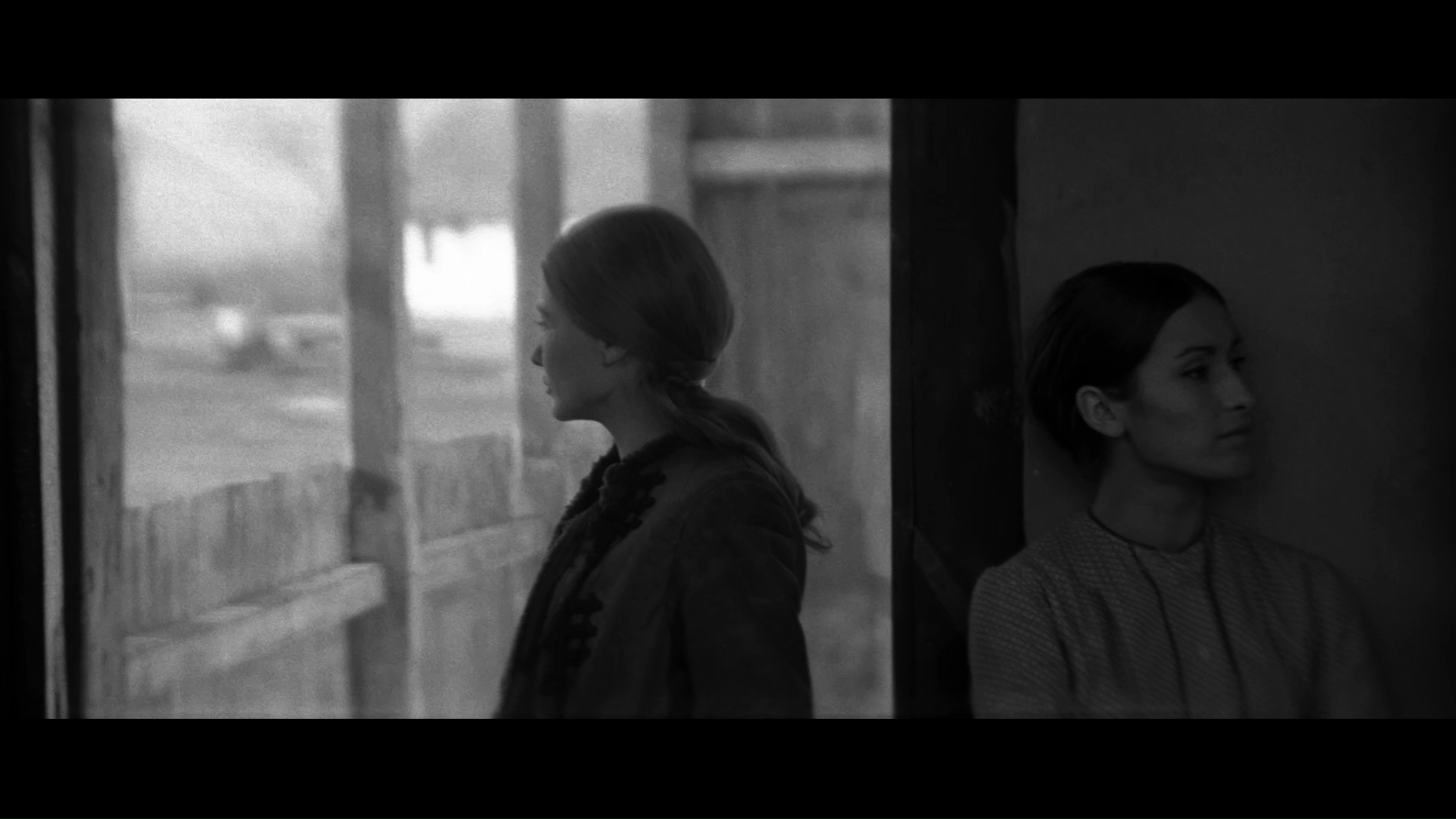 vital Eastern European filmmakers, the late Miklós Jancsó has been treated well with deluxe releases afforded to some of his key films like Electra, My Love, The Confrontation, and Private Vices, Public Virtues. In good company with those films is Silence and Cry, which foreshadows his formal experimentation in Electra using wide shots (in impeccable scope) and fluid camera movement to portray not just a dramatic story but a vivid sense of time and place.
vital Eastern European filmmakers, the late Miklós Jancsó has been treated well with deluxe releases afforded to some of his key films like Electra, My Love, The Confrontation, and Private Vices, Public Virtues. In good company with those films is Silence and Cry, which foreshadows his formal experimentation in Electra using wide shots (in impeccable scope) and fluid camera movement to portray not just a dramatic story but a vivid sense of time and place.
In this case, the viewer is dropped into 1919 Hungary in the shell-shocked aftermath of World War I (covered in a brief, stark opening photo montage) as an extreme right-wing revolution has consumed the country. A major purge is in effect against the existing Red Army and its soldiers including István Cserzi, who's taken refuge on a country farm thanks to the aid of sympathetic benefactors including Teréz (Töröcsik), Anna (Drahota), and the conflicted Kémeri (Latinovits), a childhood friend now in the current army and reluctantly disobeying orders thanks to his sexual involvement with Teréz. However, István makes a disturbing discovery about his protectors that forces him to weigh his own moral duties against the value of his life.
Extremely 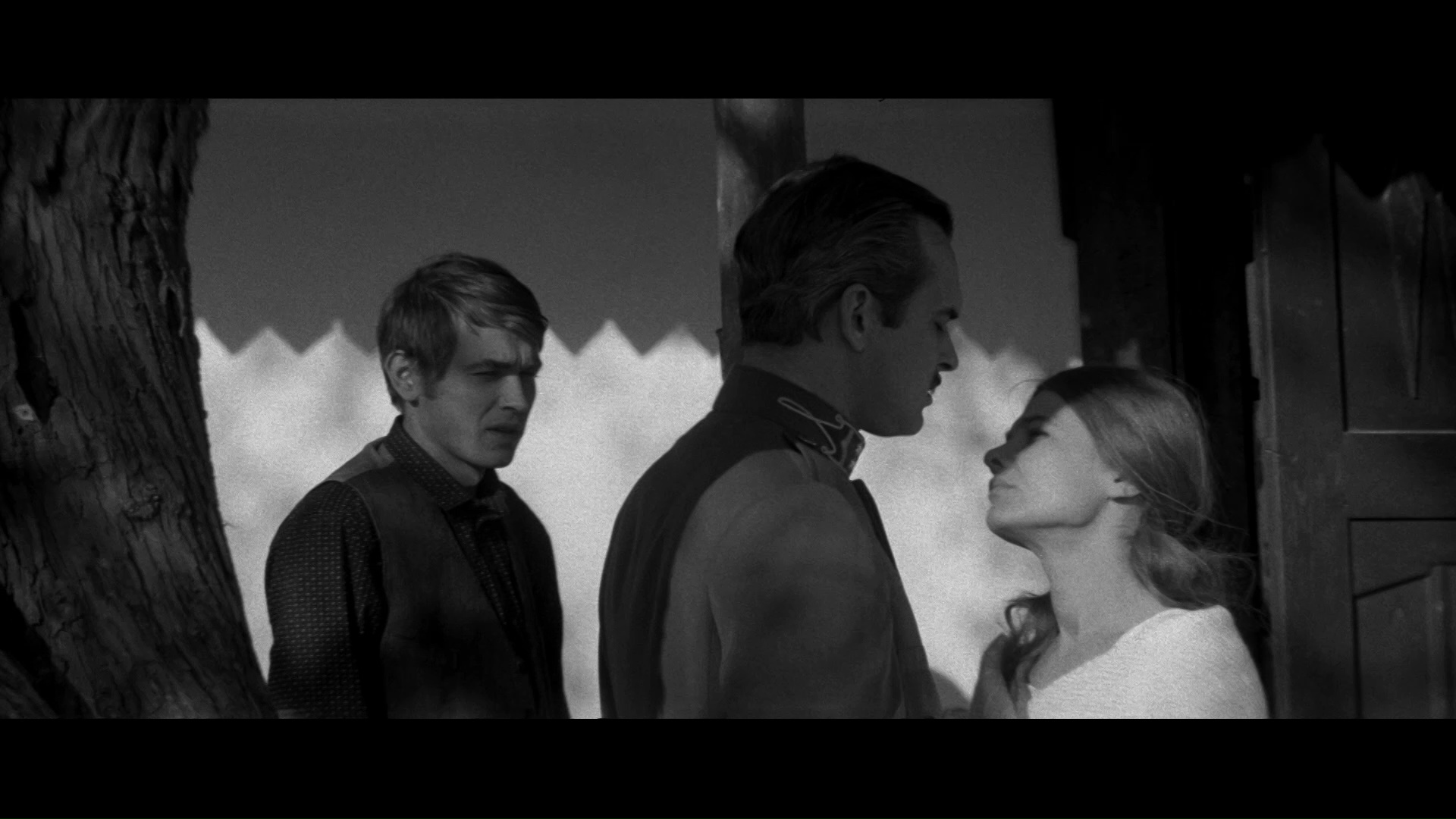
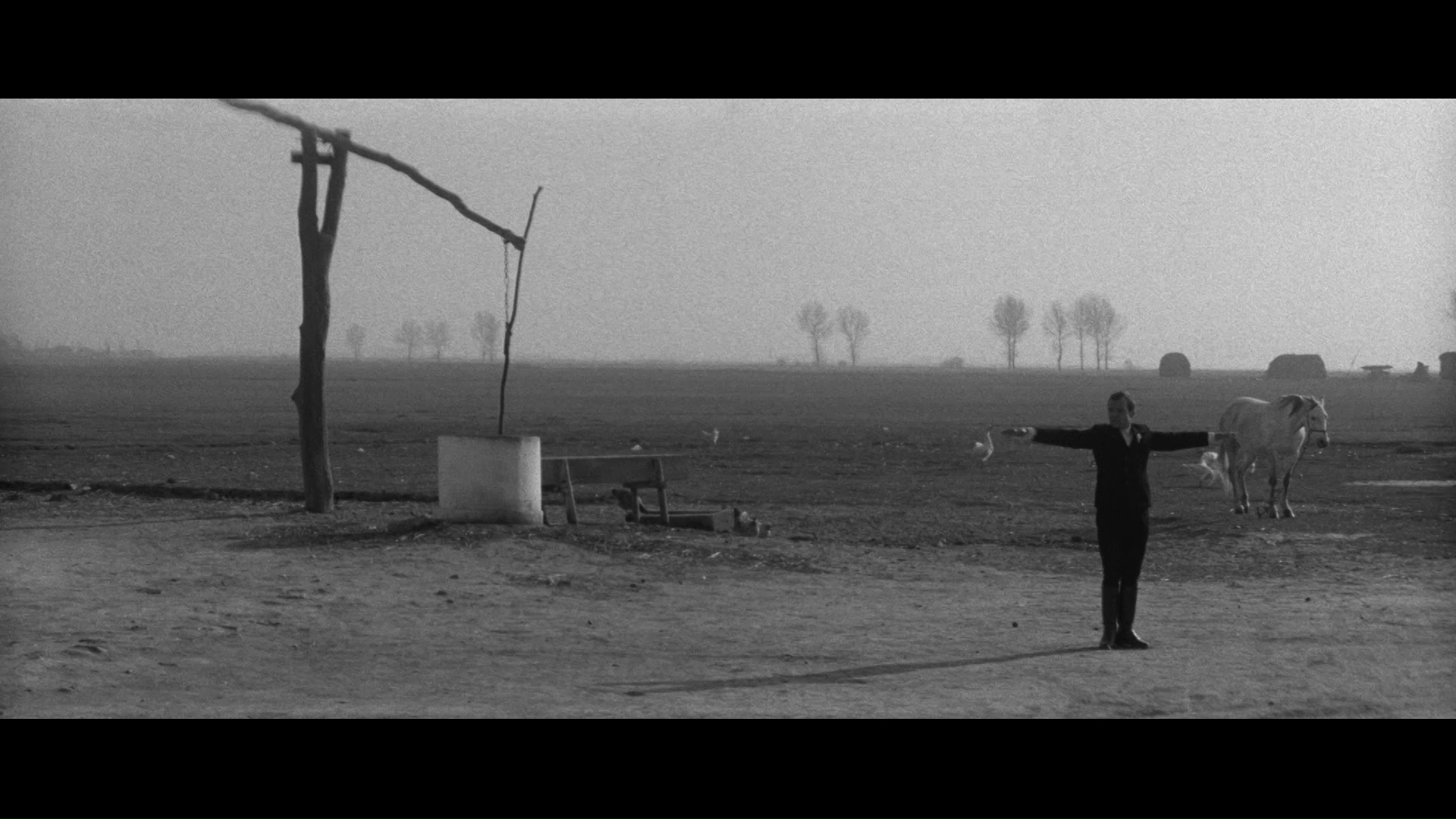 short and deliberately light on plot and character development, Silence and Cry is more of a meditation on the corrupting nature of the police state mindset. Artistically it's even more fascinating, using wide open spaces and his familiar gliding, half-circle camera movements to create a sense of paranoia and fatalism even in scenes where nothing seems to be happening. It's an approach that won't work for some viewers since it takes a while to get a firm grasp on exactly who everyone is and where this is all heading, so newcomers may want to sample at least one of his more accessible titles before plunging into this one. However, the more adventurous will find plenty of rewards here from a visual standpoint alone and also find its chilling take on the suppression of freedom -- an always present and frequently mutating concern in all of his films -- tough to shake off.
short and deliberately light on plot and character development, Silence and Cry is more of a meditation on the corrupting nature of the police state mindset. Artistically it's even more fascinating, using wide open spaces and his familiar gliding, half-circle camera movements to create a sense of paranoia and fatalism even in scenes where nothing seems to be happening. It's an approach that won't work for some viewers since it takes a while to get a firm grasp on exactly who everyone is and where this is all heading, so newcomers may want to sample at least one of his more accessible titles before plunging into this one. However, the more adventurous will find plenty of rewards here from a visual standpoint alone and also find its chilling take on the suppression of freedom -- an always present and frequently mutating concern in all of his films -- tough to shake off.
This film first appeared briefly on DVD from questionable provenance in 2003 in a widescreen subtitled edition that's been nearly impossible to find for many years, so this will likely be a new experience for most. The 2018 Blu-ray and DVD releases from the always reliable Second Run look excellent, sporting a new 2K restoration from the Hungarian Digital Archive and Film Institute, supervised by cinematographer János Kende. Element damage is very minimal and 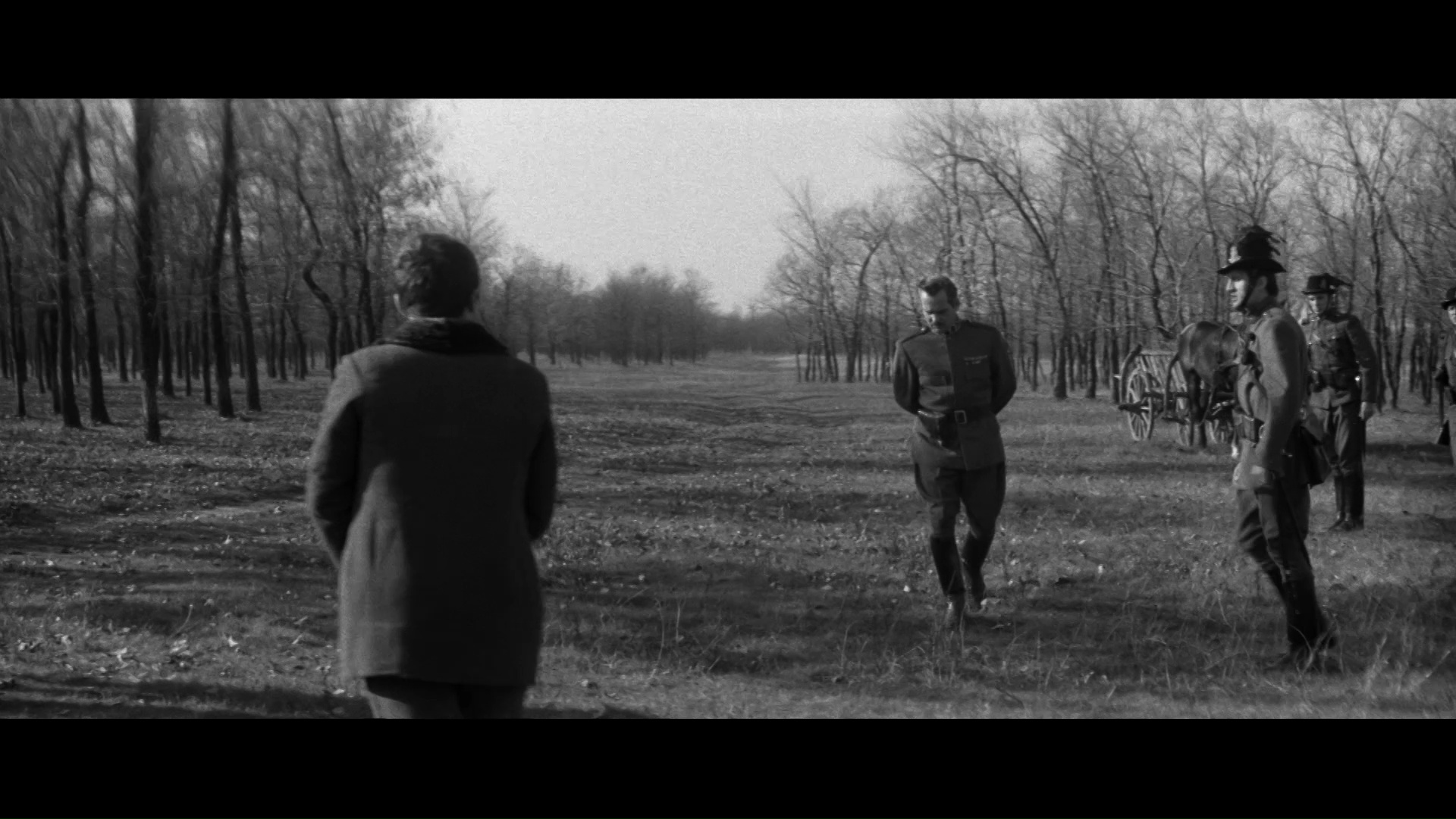 detail looks precise and impressive, which is important considering how heavily this film
detail looks precise and impressive, which is important considering how heavily this film 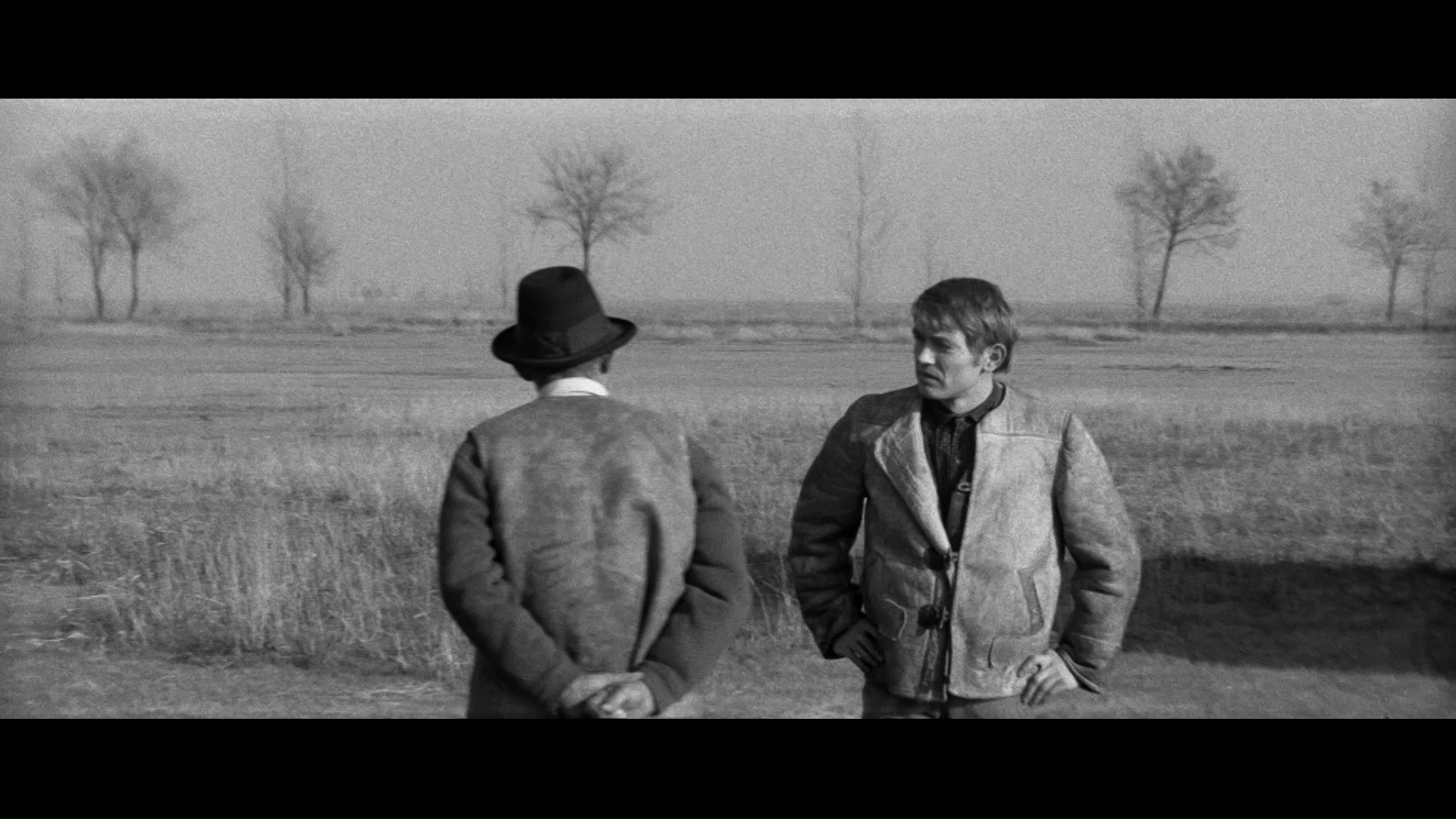 relies on landscape shots and the dense textures of life around the farmhouse. The LPCM Hungarian audio is also in fine shape with optional English subtitles provided.
relies on landscape shots and the dense textures of life around the farmhouse. The LPCM Hungarian audio is also in fine shape with optional English subtitles provided.
The sole video extra is a trio of films made by the director over a 21-year period, "Presence I" from 1965 (8m4s), "Presence II" from 1978 (10m14s), and "Presence III" from 1986 (13m56s), which paints a stark but visually striking portrait of Judaism enduring in Hungary in decaying and war-blasted conditions. All three are presented in immaculate condition in HD, with the first in black-and-white and its original 1.33:1 aspect ratio before switching to color and widescreen (1.66:1 and 1.85:1) for the other two. A booklet is also included featuring literate and useful liner notes by film historian Tony Rayns, who explains the social and political conditions the film was addressing while leaving enough room for interpretation about the exact nature of its targets.
Reviewed on March 6, 2018.



 recognized as a profoundly
recognized as a profoundly  vital Eastern European filmmakers, the late Miklós Jancsó has been treated well with deluxe releases afforded to some of his key films like Electra, My Love, The Confrontation, and Private Vices, Public Virtues. In good company with those films is Silence and Cry, which foreshadows his formal experimentation in Electra using wide shots (in impeccable scope) and fluid camera movement to portray not just a dramatic story but a vivid sense of time and place.
vital Eastern European filmmakers, the late Miklós Jancsó has been treated well with deluxe releases afforded to some of his key films like Electra, My Love, The Confrontation, and Private Vices, Public Virtues. In good company with those films is Silence and Cry, which foreshadows his formal experimentation in Electra using wide shots (in impeccable scope) and fluid camera movement to portray not just a dramatic story but a vivid sense of time and place. 
 short and deliberately light on plot and character development, Silence and Cry is more of a meditation on the corrupting nature of the police state mindset. Artistically it's even more fascinating, using wide open spaces and his familiar gliding, half-circle camera movements to create a sense of paranoia and fatalism even in scenes where nothing seems to be happening. It's an approach that won't work for some viewers since it takes a while to get a firm grasp on exactly who everyone is and where this is all heading, so newcomers may want to sample at least one of his more accessible titles before plunging into this one. However, the more adventurous will find plenty of rewards here from a visual standpoint alone and also find its chilling take on the suppression of freedom -- an always present and frequently mutating concern in all of his films -- tough to shake off.
short and deliberately light on plot and character development, Silence and Cry is more of a meditation on the corrupting nature of the police state mindset. Artistically it's even more fascinating, using wide open spaces and his familiar gliding, half-circle camera movements to create a sense of paranoia and fatalism even in scenes where nothing seems to be happening. It's an approach that won't work for some viewers since it takes a while to get a firm grasp on exactly who everyone is and where this is all heading, so newcomers may want to sample at least one of his more accessible titles before plunging into this one. However, the more adventurous will find plenty of rewards here from a visual standpoint alone and also find its chilling take on the suppression of freedom -- an always present and frequently mutating concern in all of his films -- tough to shake off.  detail looks precise and impressive, which is important considering how heavily this film
detail looks precise and impressive, which is important considering how heavily this film  relies on landscape shots and the dense textures of life around the farmhouse. The LPCM Hungarian audio is also in fine shape with optional English subtitles provided.
relies on landscape shots and the dense textures of life around the farmhouse. The LPCM Hungarian audio is also in fine shape with optional English subtitles provided. ![]()